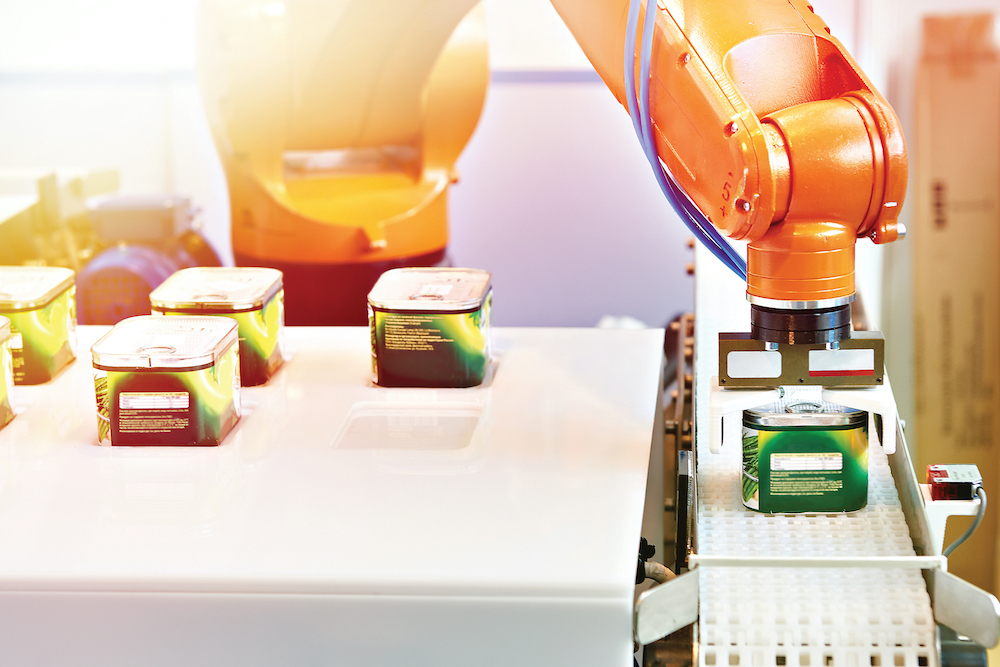
Centre stage: Jeff Burnstein from A3 discusses industrial robots, safety, labour issues and more
November 28, 2022
By
Sukanya Ray Ghosh
 Photo: iStock / Getty Images Plus/ sergeyryzhov
Photo: iStock / Getty Images Plus/ sergeyryzhov In a recent episode of MA’s podcast Machine Language, Jeff Burnstein, president of the Association for Advancing Automation discusses trends in industrial robotics, what is next in the human-machine collaboration space, what manufacturers should consider when implementing robotics, safety standards and more. An edited transcript is below.
Listen to the full conversation here.
 Manufacturing AUTOMATION: What trends in industrial robotics do you see governing the North American manufacturing in the near future?
Manufacturing AUTOMATION: What trends in industrial robotics do you see governing the North American manufacturing in the near future?
Jeff Burnstein:There are a lot of trends that we’re currently seeing in robotics. One of them is the transition into a wider range of industries. When I got involved in this nearly four decades ago, the automotive industry was the largest user by far. Over time, we knew that if robotics was really going to have an impact, it was going to have to be widely adopted in every industry. For the first time ever, in 2020, we saw non-automotive customers comprise a larger share of robot orders. That’s the current overarching trend. In terms of technology itself, robots have become easier to use. You have companies offering no code robots or robots that can be controlled more easily or controlled by hand. You have collaborative robots that are working side-by-side with people. And then, there is a trend toward mobile robotics. When you look at the hottest field right now in terms of robotics adoption, it’s warehousing and logistics.
MA: Industry 5.0 is already here with focus on human-machine collaboration. What is next in this space?
JB: First of all, we’re not getting people out of the equation. People are critical to the success of the adoption of robotics. So, what we’re seeing is people doing better, safer and higher paying jobs. They’re not walking six miles in a warehouse anymore, or lifting heavy boxes. What we’re seeing is people doing higher-value jobs. The jobs that are open require a different set of skills. We need to do a better job of educating people for the jobs of the future and the jobs of today. We need to do a better job of retraining the current workforce for these jobs. And we need to make sure that we’re creating jobs that anybody can benefit from. What we don’t want to do is create more dull, dirty, dangerous jobs that people don’t want.
MA: North America is facing a labour shortage crisis at present. How can the latest advancements in robotics help manufacturers recover quicker from the after effects of the pandemic and all the other existing constraints in the market?
JB: There was a time when everyone was talking about robots replacing people. The current problem is that you can’t find people. I talked to a leading aerospace company recently and they said that would actually buy more robots if they had a trained workforce that could implement them and adapt them. You talk to the companies who do welding and they say, we can’t find welders. We have to have robots that have to do the welding. Every situation is the same. The situation has flipped.
MA: Cost is a big factor when implementing technologies. Now we’re seeing this trend robot-as-a-service, smaller-sized robots, and other different ways to aid small and medium businesses adopt these technologies. How do you see this helping adoption within the industry?
JB:Cost and return on investment are always major considerations. So, these new models are pretty exciting. I know in the warehousing field, if you need to ramp up to get a whole fleet of robots, you don’t want to make the capital equipment expense. A lot of companies can afford to just write such huge checks. So leasing is becoming popular. Robots-as-a-service is really is starting to have an impact. I talked to a company in Michigan and they are developing a four-robot system to change tires. Why? Because companies can’t find enough people to change tires. Now, a four-robot system can do it faster, more accurately, with data to show to what level it was torqued and so on. Anybody can operate that system and they’re planning to charge by the tire they change. Now that’s an interesting model that can be applied to all kinds of industries.
MA: When it comes to implementing robots, safety is an important part of the conversation for manufacturers.
JB: Safety has been a top priority for our association since the 1980s. We developed the first American national robots safety standards. We work with organizations in Canada, and throughout the world, on safety. We have to make sure that the standards are kept up-to-date. We also have to make sure that companies are following the standards and understand how the technology has evolved and what is safe.
A long time ago, robots had to be behind a fence and you had to keep people away. Now we’re working side-by-side with robots. So you really have to do a very careful risk assessment. You can put a small robot next to a person and it could hit them. It’s not fine if it’s holding a knife or is holding some toxic vial in its gripper. You really have to understand what you’re doing when you put these machines next to people.
We’re also focused on the mobile robots safety and we are developing standards in that area as we’re seeing this explosion of what’s out there on the floor zipping around.
MA: Robots have sensory capabilities that make them ideal workers. What are your thoughts on this?
JB: Technology is getting smarter. Sensory capabilities are better. A robot today sees better and understands how to pick up an object better. All that is true. But it doesn’t understand the context of what we are trying to do. The robot only knows and sees what it has been programmed to do; what the AI is allowing it to learn from its experiences. But people have a sense of awareness that machines just don’t. They understand the role that they have but don’t understand the big picture. I am optimistic about the role of people. Going forward. I don’t think we’re going to be able to implement technology successfully without the people not only in the loop but in charge of these processes.
Advertisement
- Q&A with Bassam Zarkout on IIoT solutions and their role in the manufacturing space
- Allied Electronics adds Schneider Electric’s Altivar ATS480 soft starters to product lineup